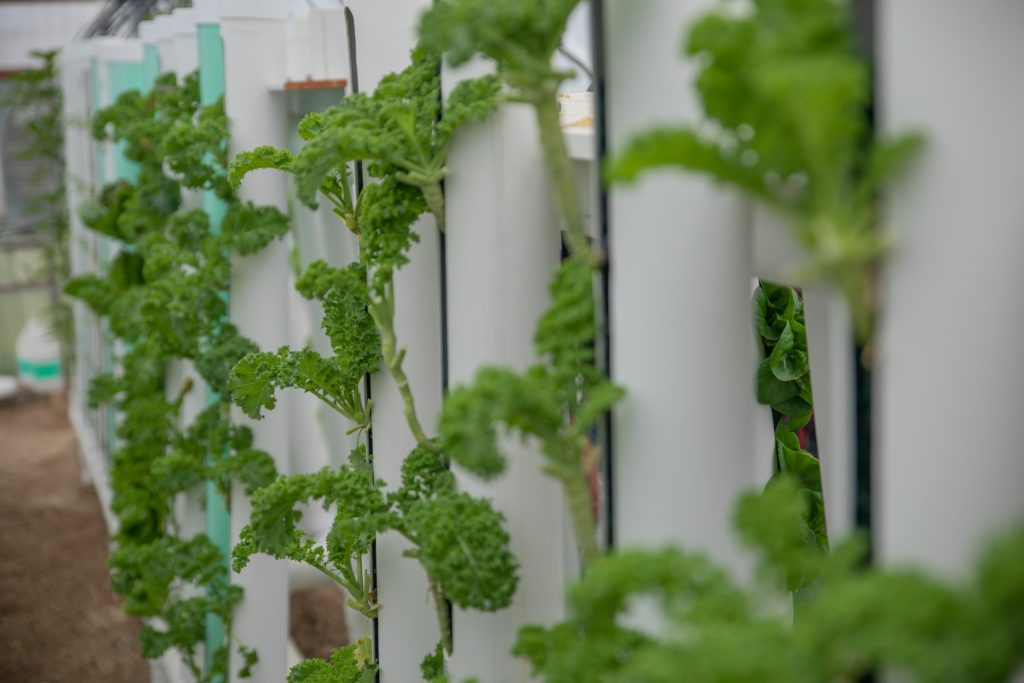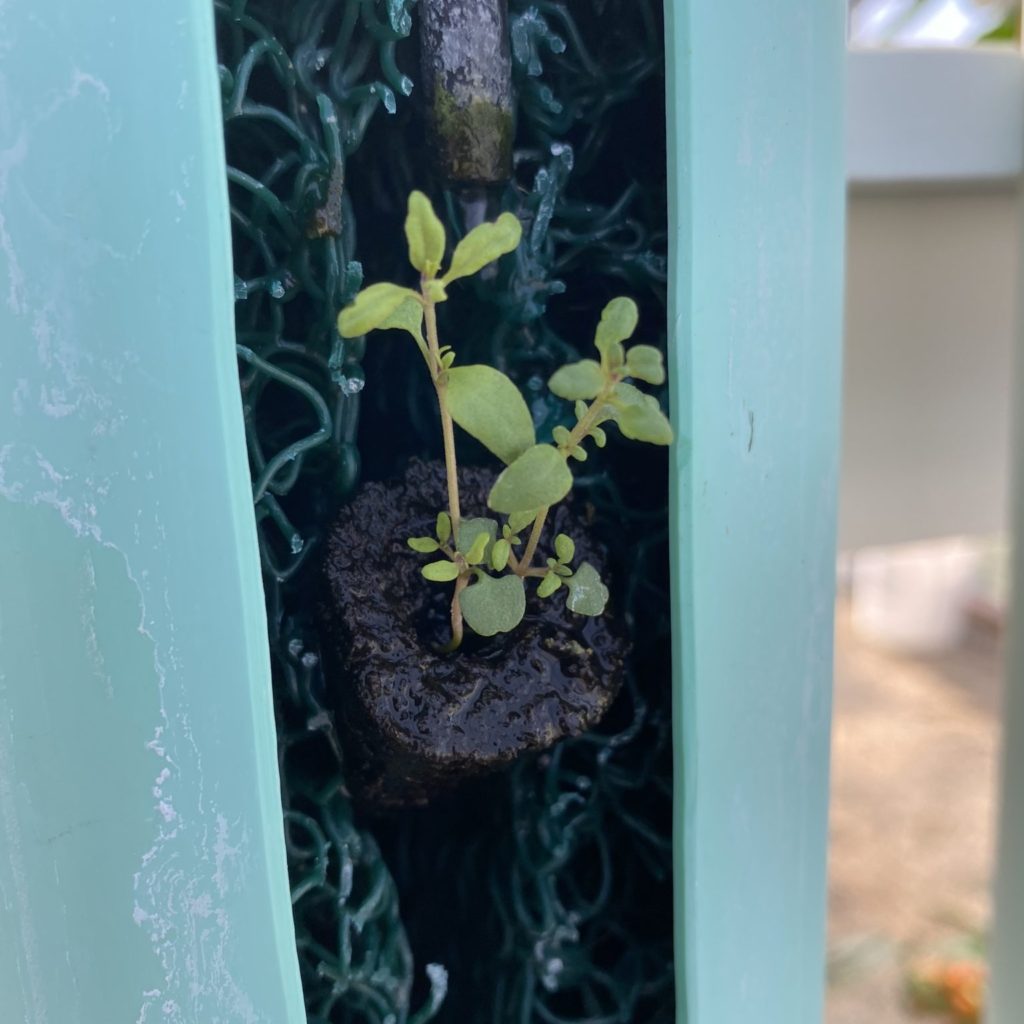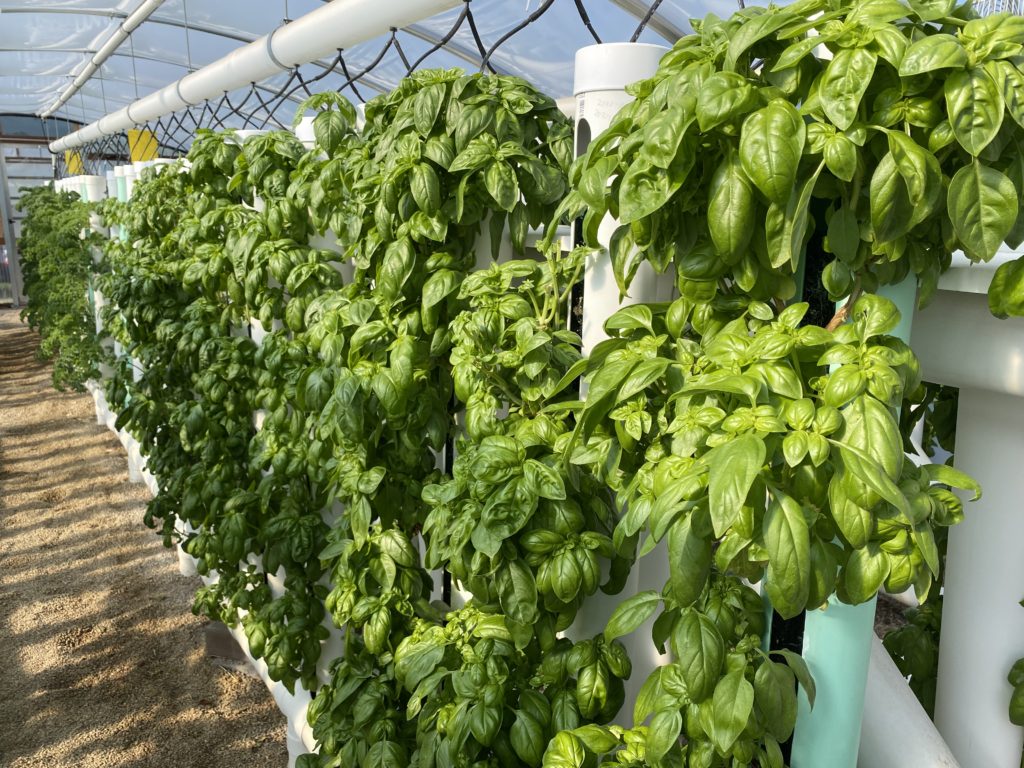
Vertical NFT Hydroponics
Vertical NFT is what we started with in hydroponics, and successfully operated this type of system for years. We ultimately phased this out in 2023/2024 for more deep water culture and ebb and flow capacity, but have left this page up as an information source for people who may be interested. We ran vertical NFT for many years and are highly experienced with it if you have any questions!
Vertical NFT Hydroponics
Our first greenhouse utilized a vertical nutrient film technique (NFT) hydroponic system that we designed and refined over eight years of operations. These systems take your footprint up instead of out, offering the potential for high plant density in a smaller footprint.
In this system, water is pumped from a holding reservoir to the top of the NFT tubes, where it flows down through a growing media. At the bottom of the tube, excess water drains out of the tube back to the holding reservoir. Plants (usually in grow plugs) are placed into the growing media, which allows a substrate for roots to grow into as the plant matures.

Hydroponic Crops

We successfully grew a variety of crops in the vertical system, including:
- More than a dozen varieties of lettuce
- Kale
- Swiss Chard
- Basil
- Arugula
- Spinach
- Parsley
- Cilantro
- Thyme
- Leeks
In addition to the crops listed above, this system was an effective incubator for starting clones of other crops. These crops are transplanted to other growing media once established. However, during the initial stage of cloning the hydroponic tubes provide a steady flow of nutrients for the plant to re-establish roots. We successfully cloned the following plants in vertical NFT:
- Tomatoes
- Sweet potatoes
- Strawberries
- Rosemary
- Sage
- Peppers
Long-Term Hydroponics
One of the advantages of the vertical system is its suitability for long-term hydroponic cultivation. This is especially true for multi-harvest crops such as kale and basil, where leaves can be plucked while leaving the plant base to grow further. Aside from harvesting, the largest labor cost involved in this greenhouse is cleaning tubes and media between crops.
Crops that allow multiple harvests reduce the number of times that tubes must be cleaned/re-planted over time, which improves the economics of running the greenhouse.
For example, when measuring profitability we typically use lettuce as our baseline crop because it is one of the simplest and most profitable greenhouse crops. To compare crop yields, we measure revenue per week as (yield oz per head x heads per tube x $/oz). Over the course of the year, our lettuce averages 8-10 weeks for maturity. Crops such as kale typically produce a lower tube yield per week; however, it begins producing in 6-8 weeks and continues to produce for months. So, in 16 weeks we can harvest two crops of lettuce, or in the same timeframe can usually harvest 8-10 weeks worth of kale – without the labor of cleaning/replanting the tube in between. While the kale produces less per week, leaving it in the tubes long-term yields better lifetime revenue than lettuce.
A key to this long-term growth is the nature of the vertical system. Inside each tube is a robust grow media that holds the plants. The plants are able to develop strong root systems entwined in the media, which supports the plants as they grow larger and mature. For long-term growth, this is critical compared to deep water culture or ebb-and-flow hydroponics. Such systems provide adequate nutrient, but no support for roots to hold on to and support large plants.
With these strategies in mind, we regularly grew a variety of multi-harvest crops for extended periods of time – usually 4-6 months. However, we often kept some of our kale and basil crops in place for 9-12 months, and our longest kale crop was almost 24 months old when we retired this system!
